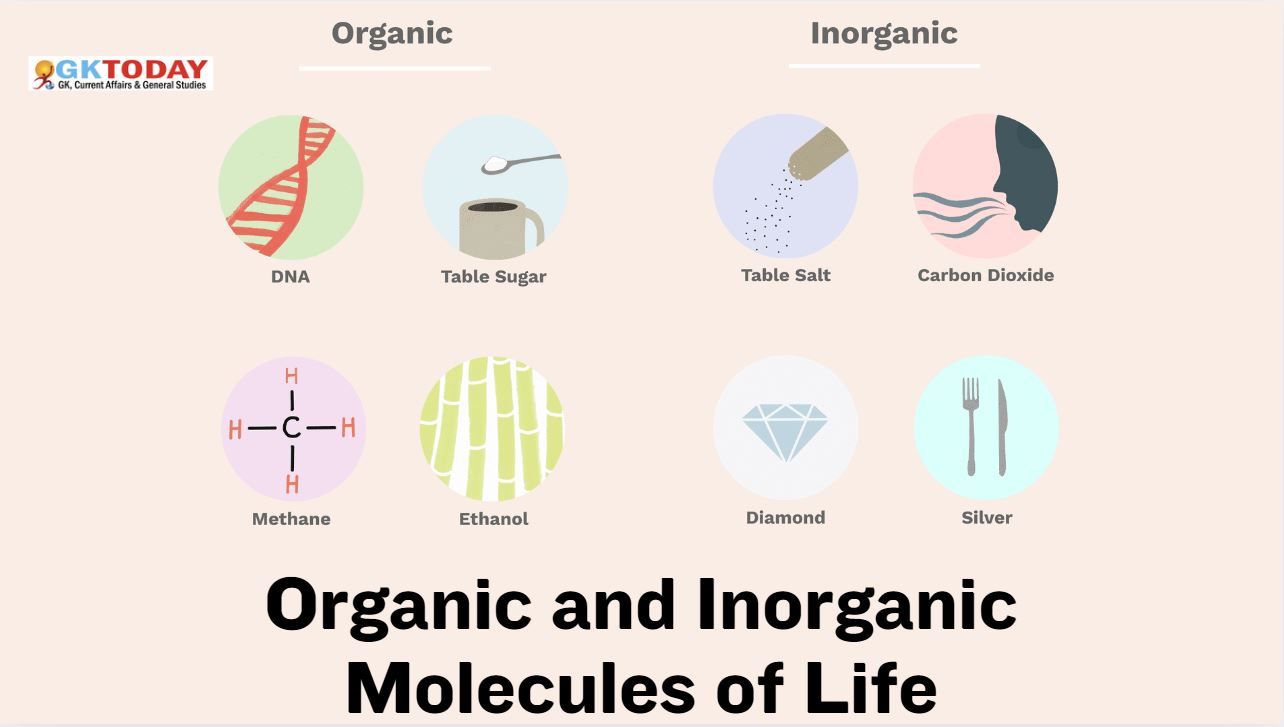Organic and Inorganic Molecules of Life
Four chemical elements that make up the majority of living biological matter are Carbon, Hydrogen, Oxygen and Nitrogen. Organisms are made of both organic and inorganic substances.
Inorganic substances
Some of the most common inorganic substances needed for life are water, mineral salts, molecular oxygen, molecular carbon dioxide etc. Out of them, water is the most abundant inorganic substance in almost all animals and plants. Mineral salts are simple, inorganic substances made up of metallic chemical elements, such as iron, sodium, potassium, calcium and magnesium, or of non-metallic elements, such as chlorine and phosphorus. The mineral salts are found in two forms viz. solubilized ions (such as sodium and potassium ions in cells) or non-solubilized form such as calcium in our bones.
Organic Molecules
There are many types of organic molecules that are important for living organisms. Out of them, four molecules viz. nucleic acids (DNA & RNA) , Proteins, Carbohydrates and Lipids are referred to as bio-organic molecules because they are essential to living organisms and contain carbon. These perform the basic functions of life such as structural functions (compose, surround and maintain organs, membranes, cell organelles, etc.), energy functions (chemical reactions in metabolism), control and informative functions (genetic code control, inter and intracellular signalling etc.) and enzymatic functions (facilitation of chemical reactions).
These molecules are much more complex and made of sequences of carbon chains bound to other elements called polymers or biopolymers or giant polymers. They are also called macromolecules– the molecules which have molecular weight greater than 1,000 Daltons.
These four kinds of Macromolecules are quite diverse in terms of structure, size, and function. Some of the common features of all of them are as follows:
- All are comprised of single units linked together to create a chain. Similar to a freight train with many cars. All the monomers or single units contain carbon.
- All monomers are linked together through a process known as dehydration synthesis, which literally means “building by removing water.”
- All polymers are broken down by the same method called hydrolysis. Hydrolysis means “breaking with water.”
Carbohydrates, lipids, and even proteins can be metabolized for energy. ATP and related compounds are used as temporary energy storage vehicles. The comparative value of the common energy sources for cells is given below:
- Carbohydrate → 4 kcal/g
- Fat → 9 kcal/g
- Protein → 4 kcal/g


